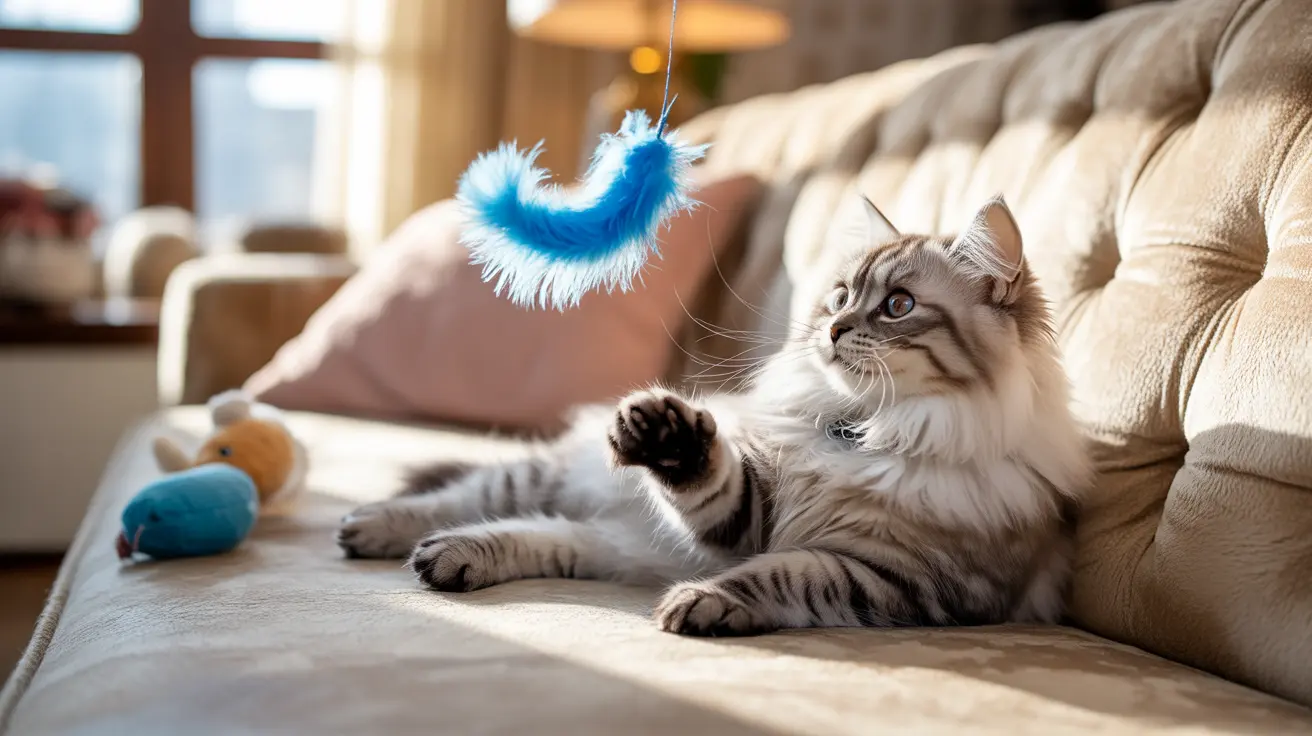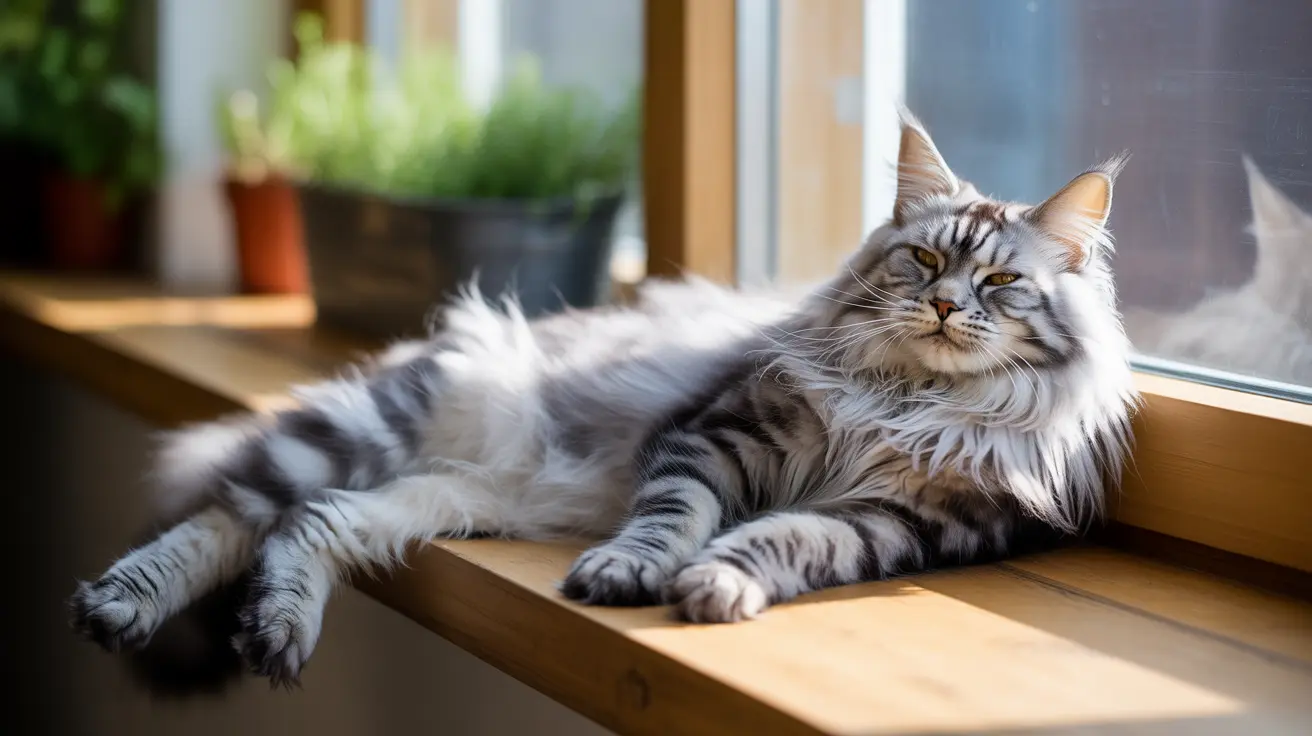Common Cat Owner Mistakes: Two Critical Errors That Damage Your Bond with Your Feline Friend
Even the most devoted cat owners unknowingly make mistakes that can strain their relationship with their feline companions. While many focus on obvious care aspects like feeding and grooming, recent research reveals that two fundamental interaction errors are surprisingly common—even among experienced cat enthusiasts. These mistakes involve misunderstanding where cats like to be touched and failing to respect their need for personal space.
Understanding these common cat owner mistakes is crucial for building a stronger, more trusting relationship with your pet. When we misread our cats' preferences for physical contact and personal boundaries, we inadvertently create stress and discomfort that can damage the human-feline bond over time. By learning to recognize what cats actually enjoy and respecting their communication signals, owners can transform their interactions from potentially stressful encounters into positive bonding experiences.
This comprehensive guide will explore the science behind these interaction mistakes, help you recognize your cat's comfort signals, and provide practical strategies for creating more positive experiences with your feline friend.
The Two Most Common Cat Interaction Mistakes
Mistake #1: Petting Cats in Areas They Find Unpleasant
Research involving 120 cat owners interacting with unfamiliar shelter cats revealed a striking pattern: many owners, including those who consider themselves cat experts, consistently pet cats in areas that most felines find uncomfortable or unpleasant. The study found that participants frequently stroked cats on their legs, belly, back, and tail tip—all areas that cats typically prefer to keep off-limits to human touch.
This mistake occurs because humans often assume that if a little petting is good, more extensive touching must be better. However, cats have very specific preferences about where they enjoy being touched, and these preferences are rooted in their natural social behavior and sensory systems.
Mistake #2: Failing to Respect Cats' Need for Personal Space
The second critical error involves forcing contact rather than allowing cats to initiate or control interactions. Many owners approach their cats and immediately begin petting or handling them without waiting for signs that the cat is receptive to contact. This approach violates cats' fundamental need for personal space and control over social interactions.
Cats are naturally cautious animals that prefer to assess situations before engaging. When humans bypass this natural process and force interaction, it creates stress and can lead to avoidance behaviors or defensive responses from the cat.
The Science Behind Cat Touch Preferences
Understanding Feline Sensory Systems
Cats have highly sensitive tactile systems that make certain areas of their bodies more pleasant to touch than others. The areas cats prefer for petting—behind the ears, chin, and cheeks—contain scent glands that play important roles in communication and comfort. When cats rub these areas against objects or people, they're marking territory and expressing contentment.
In contrast, areas like the belly, legs, and tail are more vulnerable and sensitive. These regions are associated with defensive responses in cats' natural behavior patterns. The belly, in particular, contains vital organs that cats instinctively protect, while the tail and legs are essential for escape and mobility.
Preferred vs. Avoided Touch Zones
Research consistently shows that cats prefer being petted in specific areas:
- Behind the ears and around the ear base
- Under the chin and along the jawline
- Cheek and forehead areas
- The top of the head between the ears
Areas that cats typically find unpleasant or stressful include:
- Belly and stomach region
- Legs and paws
- Tail, especially the tip
- Lower back near the tail base
How Personality Affects Cat Interactions
The Role of Human Personality Traits
The research revealed interesting connections between human personality traits and interaction mistakes. Extroverted individuals were more likely to make both common mistakes, perhaps because their naturally outgoing nature leads them to be more physically demonstrative with cats. This highlights how our own social preferences don't necessarily translate to what cats find comfortable.
Conversely, calmer and more agreeable individuals, as well as those with professional experience working with cats, demonstrated better understanding of feline needs and preferences. These individuals were more likely to follow the cats' cues and create positive interaction experiences.
Age and Experience Factors
Professional cat experience proved to be a significant factor in avoiding these common mistakes. People who had worked with cats in professional settings—such as veterinary staff or shelter workers—showed greater awareness of cat body language and comfort signals. This suggests that formal education about feline behavior, rather than just personal pet ownership, plays a crucial role in understanding cats' needs.
Recognizing Cat Comfort and Discomfort Signals
Signs of a Comfortable Cat
Learning to read your cat's body language is essential for avoiding these common interaction mistakes. A comfortable cat will display several positive signals during petting sessions:
- Purring and relaxed body posture
- Slow blinking or closing eyes during petting
- Leaning into your hand or rubbing against you
- Kneading with front paws
- Relaxed facial expression with ears in neutral position
Warning Signs of Discomfort
Cats communicate discomfort through subtle body language that owners often miss or misinterpret:
- Tail twitching, swishing, or tucking under the body
- Ears flattened back or rotating to monitor surroundings
- Tense body posture or attempting to move away
- Stopping purring or vocalizing with short, sharp sounds
- Skin rippling along the back or sides
Behavioral changes such as hiding, loss of appetite, or changes in litter box habits can also indicate stress from inappropriate handling and warrant veterinary evaluation, as cats often hide illness and discomfort well.
Building Trust Through Proper Cat Interactions
The Importance of Cat-Initiated Contact
Successful cat interactions begin with allowing the cat to make the first move. Rather than immediately reaching for your cat, extend your hand and let them approach and sniff first. This simple gesture respects their need to assess the situation and gives them control over the interaction.
When cats initiate contact by rubbing against your hand or approaching you directly, they're signaling their readiness for interaction. This approach leads to more positive experiences and stronger bonds over time.
Step-by-Step Approach for Better Interactions
To avoid these common cat owner mistakes, follow this gradual approach:
- Sit or kneel at the cat's level rather than looming over them
- Extend your hand palm-up and allow the cat to approach
- Begin petting only in preferred areas: behind ears, chin, or cheeks
- Watch for comfort signals and stop if you notice any signs of stress
- Keep initial sessions brief and positive
- Allow the cat to end the interaction when they choose
The Impact of Forced Affection on Cat Behavior
Stress-Related Consequences
When cats experience forced affection or inappropriate touching, it can lead to various stress-related problems. Chronic stress from poor interactions may manifest as changes in eating habits, litter box avoidance, or increased hiding behavior. Some cats may develop defensive responses, including swatting, biting, or running away when humans approach.
Understanding that forced socialization can harm cats is crucial, especially since personality differences mean some cats naturally prefer solitude or limited interaction. Respecting these individual preferences leads to better outcomes for both cats and their owners.
Long-Term Relationship Effects
Consistently making these interaction mistakes can erode the trust between cats and their owners. Cats have excellent memories and will associate human contact with discomfort if these patterns continue. This can make routine care activities like grooming, nail trimming, or medical examinations much more challenging.
Conversely, cats that experience positive, respectful interactions develop stronger bonds with their owners and are more likely to seek out human companionship voluntarily.
Creating an Enriching Environment
Beyond Physical Interactions
Avoiding common cat owner mistakes extends beyond petting techniques to creating an overall environment that respects feline needs. Cats require mental and physical exercise through interactive toys and puzzles to prevent boredom and destructive behavior. Providing appropriate outlets for natural behaviors like climbing and scratching helps cats feel more secure and content.
Training cats involves establishing routines and recognizing their natural instincts rather than trying to force them into human-preferred behaviors. Cat trees, scratching posts, and designated climbing areas help fulfill these needs while preventing furniture damage.
Safe Spaces and Environmental Considerations
Creating safe spaces where cats can retreat when they need alone time is essential for respecting their personal space needs. This might include cat trees, hiding spots, or quiet rooms where cats can observe their environment without being disturbed.
Home environment safety also matters for reducing stress. Cat-proofing prevents access to toxic plants, dangerous floor cleaners, and electrical cords. Houseplants should be placed out of reach, especially species toxic to cats like lilies, begonias, aloe, daffodils, snake plants, and ficus.
Frequently Asked Questions
Why do cats prefer being petted behind their ears rather than on their belly?
Cats prefer ear petting because this area contains scent glands that are part of their natural communication system. When cats rub these areas, they're marking territory and expressing comfort. The belly, conversely, contains vital organs that cats instinctively protect, making it a vulnerable area they prefer to keep off-limits to touch.
How can I tell if my cat actually enjoys being petted?
Look for positive signals like purring, slow blinking, leaning into your hand, kneading with front paws, and relaxed body posture. A comfortable cat will often close their eyes during pleasant petting sessions and may even fall asleep. If your cat approaches you and rubs against your hand, they're indicating they want interaction.
What should I do if my cat moves away when I try to pet them?
Respect your cat's signal and give them space. Moving away is a clear indication that they don't want interaction at that moment. Try again later when they might be more receptive, and always let them approach you first. Forcing contact will only increase their reluctance to interact.
Are some cats naturally less social than others?
Yes, personality differences among cats are significant. Some cats naturally prefer solitude or limited interaction, while others are more social. These preferences should be respected rather than trying to force a less social cat to be more interactive. Understanding your individual cat's personality leads to better relationships.
How does proper petting technique affect my cat's stress levels?
Appropriate petting in preferred areas and respecting personal space significantly reduces stress for cats. Cats that experience positive, respectful interactions show fewer stress-related behaviors like hiding, appetite changes, or litter box problems. This creates a positive cycle where cats become more trusting and willing to interact.
Can these interaction mistakes affect my cat's health?
Chronic stress from inappropriate handling can contribute to various health issues, including changes in eating and elimination habits. Stress can also make routine veterinary care more difficult if cats associate human touch with discomfort. Positive interactions make cats more cooperative during necessary medical procedures.
What's the difference between professional cat handlers and typical pet owners?
Research shows that people with professional cat experience, such as veterinary staff or shelter workers, better understand feline body language and comfort signals. They're more likely to follow cats' cues and avoid the two common mistakes of inappropriate touching areas and failing to respect personal space. This suggests that education about feline behavior is valuable for all cat owners.
Conclusion
Understanding and avoiding these common cat owner mistakes—petting cats in areas they find unpleasant and failing to respect their personal space—is fundamental to building strong, trusting relationships with our feline companions. The research clearly demonstrates that even experienced cat owners often make these errors, highlighting the importance of education about proper feline interaction techniques.
By learning to recognize cats' preferred touch zones, respecting their need for personal space, and reading their comfort signals, owners can transform their interactions from potentially stressful encounters into positive bonding experiences. Remember that successful cat ownership involves understanding that cats have their own preferences and personalities that deserve respect, rather than trying to impose human social preferences on them. When we allow cats to guide interactions and respond to their natural communication signals, we create the foundation for lifelong bonds built on mutual trust and understanding.






